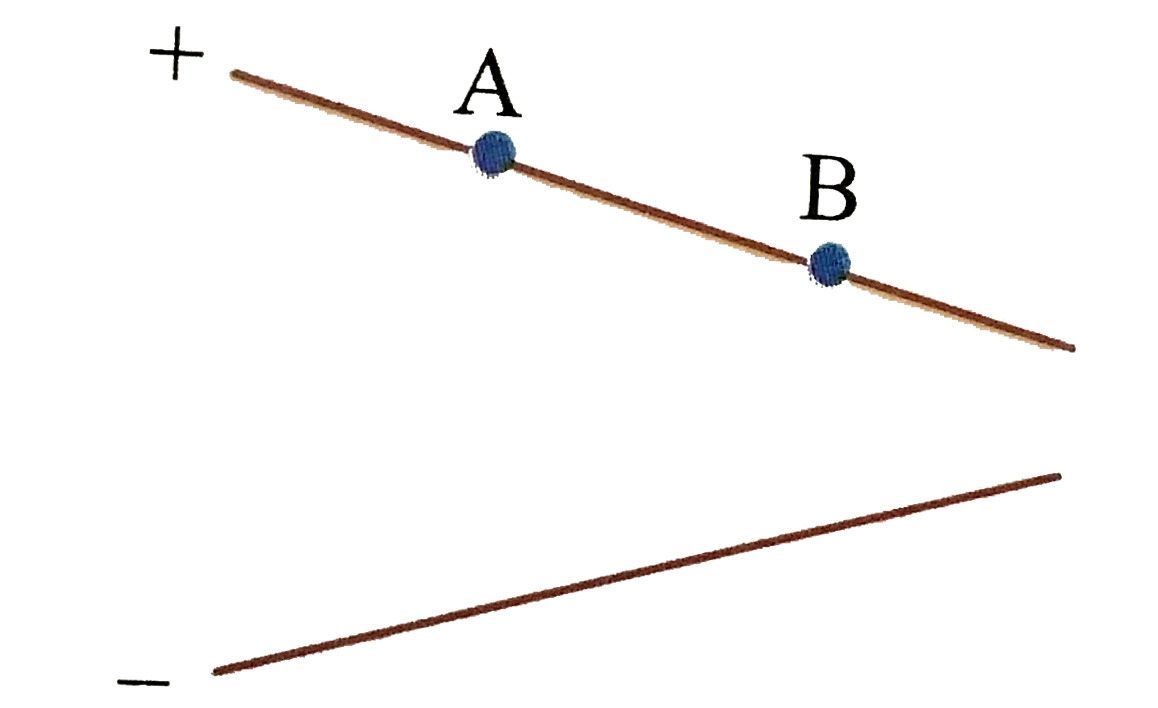The plates of a parallel plate capacitor are charged with a battery so that the plates of the capacitor have acquired the P.D. equal to e.m.f of the battery. The ratio of the work done by the battery and the energy stored in capacitor is
1:2
1:1
1:2
1:4
The correct Answer is:A
To solve the problem, we need to find the ratio of the work done by the battery to the energy stored in the capacitor. Let's break it down step by step.
Step 1: Understand the Work Done by the Battery
When a capacitor is charged by a battery, the work done by the battery (W) can be expressed as:
W=Q⋅V
where Q is the charge on the capacitor and V is the potential difference (P.D.) across the capacitor, which is equal to the e.m.f of the battery.
Step 2: Relate Charge to Capacitance
The charge Q on the capacitor is related to its capacitance C and the voltage V across it:
Q=C⋅V
Step 3: Substitute Charge into Work Done Equation
Substituting the expression for Q into the work done equation gives:
W=(C⋅V)⋅V=C⋅V2
Step 4: Calculate the Energy Stored in the Capacitor
The energy U stored in a capacitor is given by the formula:
U=12CV2
Step 5: Find the Ratio of Work Done to Energy Stored
Now, we can find the ratio of the work done by the battery to the energy stored in the capacitor:
Ratio=WU=CV212CV2
Step 6: Simplify the Ratio
This simplifies to:
Ratio=CV212CV2=112=2
Conclusion
Thus, the ratio of the work done by the battery to the energy stored in the capacitor is:
Ratio=2:1
When a capacitor is charged by a battery, the work done by the battery (W) can be expressed as:
W=Q⋅V
where Q is the charge on the capacitor and V is the potential difference (P.D.) across the capacitor, which is equal to the e.m.f of the battery.
The charge Q on the capacitor is related to its capacitance C and the voltage V across it:
Q=C⋅V
Substituting the expression for Q into the work done equation gives:
W=(C⋅V)⋅V=C⋅V2
The energy U stored in a capacitor is given by the formula:
U=12CV2
Now, we can find the ratio of the work done by the battery to the energy stored in the capacitor:
Ratio=WU=CV212CV2
This simplifies to:
Ratio=CV212CV2=112=2
Thus, the ratio of the work done by the battery to the energy stored in the capacitor is:
Ratio=2:1
Topper's Solved these Questions
Similar Questions
Knowledge Check
- Question 1 - Select One
When a battery of emf E volts is connected across a capacitor of capacitance C, then after some time the potential difference between the plates of the capacitor becomes equal to the battery voltage. The ratio of the work done by the battery and the energy stored in the capacitor when it is fully charged is
A1:1B1:2C2:1D4:1 - Question 2 - Select One or More
A parallel plate capacitor is charged and then the battery is disconnected. When the plates of the capacitor are brought closer, then
Aenergy stored in the capacitor decreasesBthe potential differences between the plates decreasesCthe capacitance increasesDthe electric field between the plates decreases - Question 3 - Select One or More
A parallel plate capacitor is charged and the charging battery is then disconnected. If the plates of the capacitor are moved farther apart by means of insulating handles:
A(a) the charge on the capacitor increases.B(b) the voltage across the plates increases.C(c) the capacitance increases.D(d) the electrostatic energy stored in the capacitor increases
A parallel plate capacitor is charged by a battery . After sometime the battery is disconnected and a dielectric slab with its thickness equal to the plate separation is inserted between the plates . How will the energy stored in the capacitor be affected ? Justify your answer
View SolutionThe plates of a parallel plate capacitor are charged by a battery and the battery is disconnected after the charging. Now, the plates are placed as shown in the figure. Then (plates are not parallel to each other).
 .View Solution
.View SolutionA parallel plate air capacitor is connected to a battery. If plates of the capacitor are pulled farther apart, then which of the following statements is/are correct ?
View SolutionA Parallel Plate capacitor is connected with a battery whose potential is constant . If the plates of capacitor are shifted apart then the intensity of electric field :
View SolutionA battery is used to charge a parallel plate capacitor till the potential differece between the plates becomes equal to the electromotive force of the battery. The ratio of the energy stored in the capacitor and the work done by the battery will be
View Solution

